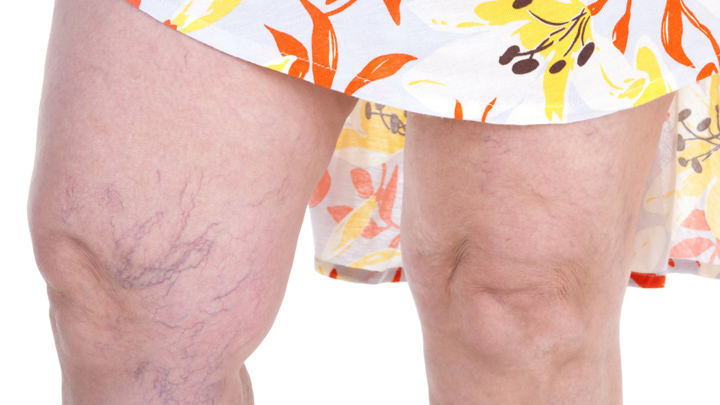All you need to know about varicose veins

Varicose veins – those ugly wriggly things that are on so many over 60’s legs – are one of the more upsetting parts of ageing. What were once beautiful, enviable pins can feel destroyed by the appearance of bulging blue lines all along them. Plenty over 60 men and women suffer from these unattractive and unsightly veins, but what is the cause, and how can you treat them?
What are varicose veins?
There are twisted, widened, darkish-blue veins that sit just underneath the skin of our legs, and are not to be confused with spider veins. Blood usually flows from smaller veins in the legs and then deeper, then to the heart but there are some one-way valves in between to stop blood going backwards. These valves can become faulty and blood goes back in, making them swollen, blue and visible varicose veins.
Causes of varicose veins
- Age – as you get older, your veins can lose elasticity causing them to stretch
- Standing or sitting for long periods
- Being immobile for long periods – for example, being confined to bed
- Lack of exercise
- Obesity
- Genetics
- Pregnancy
Are they dangerous?
Usually, no treatment is needed if you have varicose veins and you don’t need to see a doctor unless there is swelling or inflammation in the area.
What removal options are there?
A doctor will usually recommend that you don’t do anything to your varicose veins but if you are suffering from severe symptoms, surgery might be recommended. If a vein is removed or closed, there usually isn’t a problem because blood will divert to another vein. Some side effects are bruising, swelling, skin discolouration and mild pain – some would argue this is nothing compared to the embarrassment of having the veins and the quality of life it will bring to see them go.
- Sclerotherapy – a chemical is injected to scar the inside of the vein, making it close off and fade away. This can be done in a doctor’s office and may require additional treatments.
- Laser surgery – directed light makes smaller varicose veins fade away
- Endoscopic vein surgery – the doctor makes a small cut near a varicose vein and looks through a tiny camera to close it off.
- Ambulatory phlebectomy – the doctor makes small cuts in your skin to remove smaller veins close to the surface.
- Vein stripping and ligation – this is only for severe cases that involves tying the veins shut and remove the veins through cuts. Sometimes you may need to stay in hospital for 1-2 weeks.
If you have unsightly veins but would prefer to avoid surgery or treatment, you can wear support stockings that lift the leg veins.
Do you have varicose veins? What have you done to treat them? Have they affected your confidence?








 Proudly Australian owned and operated
Proudly Australian owned and operated